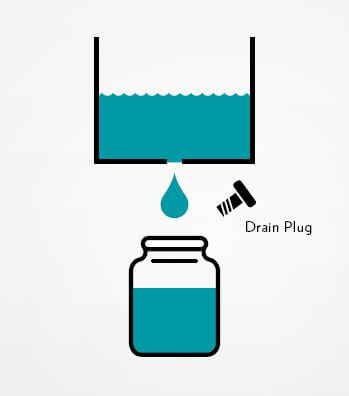-
myLab
-
Services
-
- Acid Number
- Analytical Ferrography
- Base Number: ASTM D2896 vs. D4739
- Crackle Test: Monitoring Water in Used Oil
- Demulsibility
- FTIR Direct Trend Methodology
- Fuel Distillation (ASTM D86)
- ISO Particle Count
- Karl Fischer Water Titration
- Optical Particle Classification (OPC)
- Remaining Useful Life Evaluation Routine (RULER)
- SEM-EDS Wear Debris Analysis
- Total Magnetic Iron (TMI)
- Varnish Potential
-
-
Sampling
-
- Coolant Sampling Procedures
- Grease Sampling Procedures
- Oil Sampling Basics (Short Course)
- Oil Sampling Procedures (Video)
- Oil Sampling Procedures: Good-Better-Best (PDF)
- Sample Collection Basics
- Sampling Oil Using a Drain Plug
- Sampling Oil Using a Pushbutton or KST-Series Valve
- Sampling Oil Using a Sample Pump
- Sampling Oil Using Thread-On Probe Style Valves
- Used Oil Filter Sampling
- Sampling from Filter Carts
-
-
Data Interpretation
-
- Analytical Ferrography Reporting
- Basic Testing Interpretation (PDF)
- Common Wear Mechanisms (PDF)
- DEF Specifications: ISO 22241
- Oil Cleanliness: ISO vs. NAS
- Potential Source of Spectrometry Metals (PDF)
- Reading the OA Report (PDF)
- Understanding ISO Particle Counts (PDF)
- Wear Metal Origins (PDF)
- Comparison: Wear Debris Analysis Technologies
- DEF Testing: Data interpretation
- Why Diesel Fuel Dilution is Bad for Your Engine
-
- Data Interpretation Process (Video)
- Data Interpretation: Compressors (Video)
- Data Interpretation: Diesel Engines (Video)
- Data Interpretation: Grease Analysis for Wind Turbines (VIDEO)
- Data Interpretation: Hydraulics (Video)
- Data Interpretation: Natural Gas Engines (Video)
- Data Interpretation: Oil Analysis for Wind Turbines (Video)
- Data Interpretation: Reducers (Video)
- Data Interpretation: Turbines (Video)
-
-
Whitepapers
-
Success Stories
-
FAQ
-
Release Notes
< All Topics
Print
Sampling Oil Using a Drain Plug
PostedNovember 11, 2021
UpdatedNovember 12, 2021
ByFluid Life
The following is a sampling procedure for oil sumps/ reservoirs, without fixed sampling hardware installed and where dipstick or fill-cap access is unavailable.
The oil sample is collected by gravity drain into a sample jar.

Procedure
- Take sample under normal operating conditions when possible or immediately after shutting unit down. That will ensure a homogeneous sample of hot flowing oil.
- Wipe excess contamination from sample area.
- If sampling from the drain plug, remove drain plug and place it on a clean cloth to prevent contamination. Let sufficient oil drain out before taking sample.If system has drain pipe, flush 5 times the volume of the dead leg before taking sample.
- Avoid overfilling the sample jar. Fill sample jar to or above the fill line but below the threads of the jar. Seal the jar tightly, wipe clean.
- Pre-label or label sample jar immediately after filling to avoid mix-ups. Make sure jars are labelled with full sample details (i.e. unit number, component type, date, kilometers/service hours on unit/component/oil, oil type and grade, repairs/service during drain interval, oil changed Y/N).
- Ship the sample to the appropriate Fluid Life location. Do not stockpile samples for shipping.
Download PDF
Tags:
Table of Contents
